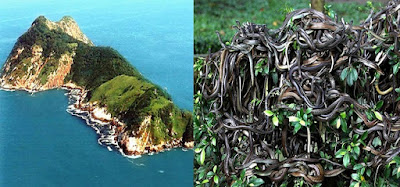Cosmic Rays
Particles that bombard the Earth from anywhere beyond its atmosphere are known as cosmic rays. Cosmic rays don't take pretty pictures, but studying the quantity and type of these particles helps us to understand the acceleration processes involved and to measure the composition of the Sun, as well as sources at the far distant reaches of the galaxy.
This stellar evolution image is courtesy of Drs. R. Mewaldt, E. Stone, and M. Wiedenbeck of the California Institute of Technology (Caltech).In a part of the galaxy where the composition of the interstellar gas is much like that of our own solar system (a), a cloud of gas collapses under the influence of its own gravity, and creates a new star (b). Inside the star (c), fusion converts some of the original hydrogen and helium into particles like carbon-12 and oxygen-16. At the same time, the carbon, nitrogen, and oxygen nuclei that were originally present in the star's fuel are converted into heavier, neutron-rich nuclei, like neon-22 and magnesium-25.
When this burning has exhausted all of the nuclear fuel in the core of the star, the star explodes as a supernova (d). The shock wave generated by the explosion produces additional heavy nuclei and ejects most of these products of nucleosynthesis back into the interstellar gas.
Repetition of these events in each generation of stars steadily enriches the interstellar gas in carbon, nitrogen, and oxygen, and in heavy nuclei with an excess of neutrons.
Some of the nuclei in the gas are accelerated to cosmic ray speeds, possibly by the shock waves from supernovae (e). Cosmic ray acceleration could also occur directly as the supernova is ejecting matter into interstellar space, as in (d).
Cosmic rays include:
- Galactic Cosmic Rays -- coming from outside the solar system
- Anomalous Cosmic Rays -- coming from the interstellar space at the edge of the heliopause
- Solar Energetic Particles -- associated with solar flares and other energetic solar events
- The term "cosmic rays" used to include X-rays and gamma rays, which are well covered in Imagine the Universe!
This stellar evolution image is courtesy of Drs. R. Mewaldt, E. Stone, and M. Wiedenbeck of the California Institute of Technology (Caltech).In a part of the galaxy where the composition of the interstellar gas is much like that of our own solar system (a), a cloud of gas collapses under the influence of its own gravity, and creates a new star (b). Inside the star (c), fusion converts some of the original hydrogen and helium into particles like carbon-12 and oxygen-16. At the same time, the carbon, nitrogen, and oxygen nuclei that were originally present in the star's fuel are converted into heavier, neutron-rich nuclei, like neon-22 and magnesium-25.
When this burning has exhausted all of the nuclear fuel in the core of the star, the star explodes as a supernova (d). The shock wave generated by the explosion produces additional heavy nuclei and ejects most of these products of nucleosynthesis back into the interstellar gas.
Repetition of these events in each generation of stars steadily enriches the interstellar gas in carbon, nitrogen, and oxygen, and in heavy nuclei with an excess of neutrons.
Some of the nuclei in the gas are accelerated to cosmic ray speeds, possibly by the shock waves from supernovae (e). Cosmic ray acceleration could also occur directly as the supernova is ejecting matter into interstellar space, as in (d).
Cosmic ray appearance:
April 23, 2012: Seeing cosmic rays in space -- Astrobiology
February 10, 2012: Alien matter in the solar system: A galactic mismatch -- Science@NASA
February 8, 2012: NASA small explorer mission celebrates ten years and forty thousand x-ray flares -- NASA
February 4, 2012: IBEX glimpses alien interstellar material -- Astrobiology
February 1, 2012: A century of cosmic rays -- Physics Today
January 2, 2012: How cosmic rays can image the throat of an active volcano -- Scientific American
December 14, 2011: Curiosity and the solar storm -- NASA
November 23, 2011: Measuring the radiation on Mars -- Astrobiology
August 24, 2011: Cloud formation may be linked to cosmic rays -- Nature
August 10, 2011: Antimatter found orbiting Earth -- a first -- National Geographic
April 10, 2011: Will space travel break our hearts? -- Astrobiology
July 29, 2010: IceCube spies unexplained pattern of cosmic rays -- Astronomy
March 12, 2010: Borexino bags geoneutrinos -- Physics World
November 4, 2009: Mutant diseases may cripple missions to Mars, beyond -- National Geographic
September 15, 2009: Space-related radiation research could help reduce fractures in cancer survivors -- National Science Biomedical Research Institute
July 8, 2009: Thunderclouds accelerate cosmic electrons -- Physics World
June 1, 2009: How do thunderstorms create lightning? High-energy particles from space used to probe thunderstorms -- Science Daily
May 29, 2009: Theorists reveal path to true muonium -- SLAC
May 14, 2009: How to catch a black hole before it eats the world -- New Scientist
May 11, 2009: More 'Star Trek' than 'Snuggie': Student design to protect lunar outpost from dangerous radiation -- Eurekalert
May 11, 2009: Resolving the ridge -- HEAPOW
January 26, 2009: CREAM over ice -- HEAPOW
December 19, 2008: Modeling radiation exposure for pilots, crew and passengers on commercial flights -- NASA
October 1, 2008: The first rocket launch from Cape Canaveral -- APOD
August 25, 2008: Double first for Large Hadron Collider -- Nature
July 11, 2008: Japanese particle-physics leader dies -- Physics World
June 5, 2008: Communications glitch delays Mars lander digging -- Physorg
May 20, 2008: LHCb measures its first cosmic ray muons -- CERN
May 8, 2008: Joint ESA/NASA team wins international award -- ESA
April 3, 2008: 'No sun link' to climate change -- BBC News
February 13, 2007: Predicting the radiation risk to ESA's astronauts -- ESA
March 21, 2007: Making cosmic gamma rays -- Astronomy.com
January 19, 2007: A new year for BaBar and PEP-II -- Stanford Linear Accelerator Center
Grades 7 - 12: In Search of Cosmic Rays: Investigations into the Origin of Cosmic Rays - 5 activities -- University of Utah ASPIRE Project
February 10, 2012: Alien matter in the solar system: A galactic mismatch -- Science@NASA
February 8, 2012: NASA small explorer mission celebrates ten years and forty thousand x-ray flares -- NASA
February 4, 2012: IBEX glimpses alien interstellar material -- Astrobiology
February 1, 2012: A century of cosmic rays -- Physics Today
January 2, 2012: How cosmic rays can image the throat of an active volcano -- Scientific American
December 14, 2011: Curiosity and the solar storm -- NASA
November 23, 2011: Measuring the radiation on Mars -- Astrobiology
August 24, 2011: Cloud formation may be linked to cosmic rays -- Nature
August 10, 2011: Antimatter found orbiting Earth -- a first -- National Geographic
April 10, 2011: Will space travel break our hearts? -- Astrobiology
July 29, 2010: IceCube spies unexplained pattern of cosmic rays -- Astronomy
March 12, 2010: Borexino bags geoneutrinos -- Physics World
November 4, 2009: Mutant diseases may cripple missions to Mars, beyond -- National Geographic
September 15, 2009: Space-related radiation research could help reduce fractures in cancer survivors -- National Science Biomedical Research Institute
July 8, 2009: Thunderclouds accelerate cosmic electrons -- Physics World
June 1, 2009: How do thunderstorms create lightning? High-energy particles from space used to probe thunderstorms -- Science Daily
May 29, 2009: Theorists reveal path to true muonium -- SLAC
May 14, 2009: How to catch a black hole before it eats the world -- New Scientist
May 11, 2009: More 'Star Trek' than 'Snuggie': Student design to protect lunar outpost from dangerous radiation -- Eurekalert
May 11, 2009: Resolving the ridge -- HEAPOW
January 26, 2009: CREAM over ice -- HEAPOW
December 19, 2008: Modeling radiation exposure for pilots, crew and passengers on commercial flights -- NASA
October 1, 2008: The first rocket launch from Cape Canaveral -- APOD
August 25, 2008: Double first for Large Hadron Collider -- Nature
July 11, 2008: Japanese particle-physics leader dies -- Physics World
June 5, 2008: Communications glitch delays Mars lander digging -- Physorg
May 20, 2008: LHCb measures its first cosmic ray muons -- CERN
May 8, 2008: Joint ESA/NASA team wins international award -- ESA
April 3, 2008: 'No sun link' to climate change -- BBC News
February 13, 2007: Predicting the radiation risk to ESA's astronauts -- ESA
March 21, 2007: Making cosmic gamma rays -- Astronomy.com
January 19, 2007: A new year for BaBar and PEP-II -- Stanford Linear Accelerator Center
Grades 7 - 12: In Search of Cosmic Rays: Investigations into the Origin of Cosmic Rays - 5 activities -- University of Utah ASPIRE Project



Comments
Post a Comment
Your suggestions